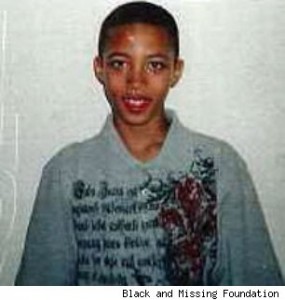The Imperfect Model Minority
June 11, 2010
Driven by sustained immigration and refugee resettlement during the 1970’s and 1980’s, Asian Americans have emerged as the fastest growing racial group and labeled as the model minority. The label ballooned into a myth. Statistics are often cited to back up their model minority status such as high educational achievement, overrepresentation at Ivy League and other prestigious universities, and a high percentage of Asian Americans working in white collar professions (jobs such as medicine, investment banking, management consulting, finance, engineering, and law).
The term “model minority” was coined in the mid-1960s by William Petersen to describe Asians in comparison to African-Americans. Asian Americans were chosen as an example of a minority group who could succeed by “merit” alone without “affirmative action.” This assumption ignored completely each group’s American history and cultural mores. The first Asians came here as willing workers. Blacks were here dragged in chains.
Modelminority.com writes: “While superficially complimentary to Asian Americans, the real purpose and effect of this portrayal is to celebrate the status quo in race relations. First, by over-emphasizing Asian American success, it de-emphasizes the problems Asian Americans continue to face from racial discrimination in all areas of public and private life. Second, by misrepresenting Asian American success as proof that the US provides equal opportunities for those who conform and work hard, it excuses US society from careful scrutiny on issues of race in general, and on the persistence of racism against Asian Americans in particular.”
The problems of Asian Americans facing racism are detailed in Rosalind S. Chou and Joe R. Feagin’s book The Myth of the Model Minority. They too suffer from poverty, unemployment, discrimination and attendant mental health issues. Psychiatrists have long linked mental health and racial discrimination. Cho Seung-Hui’s 2007 Virginia Tech Massacre illustrates how the problems of Asian Americans can go undetected and untreated. Racism and discrimination are stressful events that adversely affect health and mental health. They place minorities at risk for mental disorders such as depression and anxiety.
In their important book Black Rage, psychiatrists Grier and Cobbs draw from records of patients to show that many psychological problems of African Americans are the result not only present-day discrimination but also of the accumulating impact of years of past discrimination. As they note, “a few black people may hide their scars, [but] most harbor the wounds of yesterday.” One advantage that African Americans have over many other Americans of color is many generations of building up a collective knowledge of white racism and of the strategies that enable people to resist it. In contrast, the collective memory of resistance strategies among Asian Americans seems relatively weaker and generally less effective in providing significant protection. (Chou and Feagin)
It’s not a perfect world and one can ill afford to ignore or underestimate the consequences of racism and discrimination as experienced by people of color.
Black Lives Have Less Value
June 9, 2010
 Anthony Thomas and Kyron Horman: Two Missing Boys Demonstrate Disparity in Coverage
Anthony Thomas and Kyron Horman: Two Missing Boys Demonstrate Disparity in Coverage
It’s sad and unfortunate that two boys suddenly vanish without a trace. We ask ourselves a great many questions like who would do such a thing and why. Then there is the question why are greater resources brought to bear in the search for one over the other. Unfortunately, these are editorial decisions that reflect editorial values over community values. The unmistakable conclusion, Kyron Horman is white and has garnered national media attention while Anthony Thomas is black and has received neither local nor national media attention and that black life has less value.
Remembering Vincent Chin
June 7, 2010
Twenty eight years ago this month a hate crime galvanized the Asian American community. The killing of Vincent Chin and the subsequent trial of his killers heightened the awareness of discrimination and racism directed toward the Asian Pacific community. Chinese American Vincent Chin was having his bachelor party in a Detroit bar. Thinking he was Japanese two white who had recently been laid from Chrysler started a fight and beat Chinese several time with a bat leaving him brain dead. He died four days later. The judged fined the defendants $3,000 and ordered them to pay $780 in court fees.
At the time–and not unlike today–Michigan and its automotive industry were in a severe downturn. Ronald Ebens and Michael Nitz were involved in an altercation at the Fancy Pants in Highland Park where Vincent Chin was with three of his friends celebrating his bachelor party. During the altercation, Ebens reportedly said “because of you m—– f——, we’re out of work.” After both Ebens and Nitz, and Chin and his friends were bounced out of the Fancy Pants, Ebens and Nitz pursued Vincent Chin and his friend Jimmy Choi. They enlisted Jimmy Perry to find the “Chinese guys,” and caught up to Vincent on Woodward Avenue in front of McDonald’s Restaurant. While Nitz held Chin, Ebens beat Chin with a baseball bat. Two off-duty Highland Park Police officers saw the beating. Vincent Chin died on June 23, 1982 when he was disconnected from life support.
The Michigan Judge didn’t place much value on an Asian man’s life. The ruling seemed a throwback when Chinese, like Blacks and Indians, were not allowed to testify against whites in court. The case became a rallying point for the Detroit community, Journalist Helen Zia and lawyer Lisa Cheuk May Chin led the fight for federal Civil Rights charges. Only one of the accused was convicted and his charges were later overturned on appeal. However, a civil suit was brought on behalf of Chin’s mother awarding her a $1.5 million judgment which she has since had difficulty enforcing.
The case became a defining moment for civil rights advocacy in Asian Pacific American communities from coast to coast and helped spawn a number of Asian Pacific American organizations devoted to tracking and investigating hate crimes, including Asian American Citizens for Justice, the Committee Against Anti-Asian Violence in New York, the national Network Silence Coalition Against Anti-Asian Violence in San Francisco.
During times of economic distress immigrants often become targets of a few of the irrational majority. Today it’s common to read about hate crimes committed against minorities and Latino immigrants in particular. Vincent Chin should not be remembered just by the Asian community, but by all Americans. Vincent Chin’s death is a call to support all local and federal hate crimes legislation.
Me Nigger Too
May 29, 2010
In Kingston’s Norman Manley International Airport I spotted a group of twenty something dudes–or is it dawgs–dressed in that distinctive urban hip hop style– baggy slacks oversized shirts and baseball caps decidedly cocked or worn backwards. Ordinarily I wouldn’t have given much attention except all were of Chinese descent. They could have been Jamaicans or from the States, San Francisco, New York even London or Beijing.
They were reminders of an incident in DC during the ’68 riots following Martin Luther King’s assassination. In the inner city inferno a fearful Chinese laundry proprietor placed a scribbled sign in his window pleading No Burn–Me Nigger Too. However inartful his language it was nevertheless a striking acknowledgement of our common humanity. African and Chinese first coming to America albeit under different circumstances shared a common experience facing the same hostile forces.
By the 1950’s and the advent of the Civil Rights movements the Chinese had achieved a tenuous integration throughout the South. Too few to be regarded as a threat most owned their own businesses as grocers and shopkeepers relying on black customers and accommodating white neighbors. It wasn’t until the 1960s after more than a century of racial injustice would they find their voice challenging the system. Two American born Chinese, Grace Lee Boggs and Fred Ho, activists and writers both in their work borrowed heavily on the African American experience demonstrating, protesting, marching, and speaking out.
Grace Lee Boggs the daughter of Chinese immigrants educated at Barnard College receiving a Ph.D from Bryn Mawr in 1940 worked with West Indian Marxist historian C.L.R. James using the pen name Ria Stone. In 1953, she moved to Detroit where she married James Boggs, an African-American labor activist, writer and strategist. The two worked together in grass roots groups and projects for 40 years until Boggs’ death in July 1993. Their book, Revolution and Evolution in the Twentieth Century was published in 1974.
American jazz baritone saxophonist, Fed Ho is also a composer, bandleader, playwright, writer and social activist though most often identified with the Asian American jazz or avant-garde jazz movements. Many of his works fuse the melodies of indigenous and traditional Asian and African music. The first to combine Chinese operas and African American music he is a prolific composer and writer with a third book in progress about African Americans and Asians working together in civil rights.
There is a common thread of oppression discrimination and violence against African and Chinese Americans throughout American history. The word Nigger has come to symbolize that inhumanity. As Langston Hughes declared I Too Sing America, and no doubt Americans Grace Lee Boggs and Fred Ho wouldn’t hesitate to claim Me Nigger Too.
As part of Asian Pacific American Heritage month this is the 2nd of a four part series.
ABCs and Lessons Learned
May 21, 2010
Requiring those perceived as aliens to carry proof of citizenship is not a new phenomenon. It was a common practice required of ABCs (American Born Chinese) subjected to restrictive immigration laws beginning shortly after the Gold Rush of 1849 through the mid 20th Century. Iris Chang in her book The Chinese in America presents a compelling narrative of the Chinese American experience illustrating American racism in a different hue as profound as the contrast between black and white. California state and federal codes are replete with acts and statutes hostile to Asian Americans. The Chinese American experience is another shameful chapter in American history and particularly American jurisprudence.
No variety of anti-European sentiment has ever approached the violent extremes to which anti-Chinese agitation went in the 1870s and 1880s. Lynching, boycotts and mass explulsion. (John Higham, Stranger in the Land: Patterns of American Nativism, 1860-1925) Untold numbers of Chinese were deported from 1890 to 1920, according to Chang the number of male Chinese in the United States (at the time 95% of the Chinese population dropped from 103,620 to 85,341). Men were awakened and dragged from their homes under cover of night. During the raids, inspectors often demanded to see residence certificates needed by Chinese to stay in the United States. Inspectors often confiscated the documents without providing receipts, causing the owners months of agony, knowing they could not prove their legitimate right to reside in the United States. If the Chinese could not produce the certificate, they were expected to explain how they had lost them, which was impossible for many to do. Some immigrants exhausted their entire life savings paying legal bills and hiring detectives to locate witnesses to testify on their behalf.
The deportation process was horrendous. According to a 1913 report compiled by the Chinese Chamber of Commerce and Chinese American League of Justice of Los Angeles, the Chinese deportees were packed into railroad cars “unfit for the transportation of cattle,” poorly fed, and then herded into the holds of ships, where there endured “real torture, especially in the summertime,” when the ship sailed to the equator. With constant danger of such deportation hanging over their heads the Chinese were vulnerable to legally sanctioned blackmail and could be fleeced mercilessly by officials and hoodlums alike. (Chang) The Supreme Court conferred jurisdiction to the secretary of commerce and labor to hear immigration matters with determinations decidedly final and without judicial review. U.S. citizenship was commonly stripped from Americans of Chinese descent. The law and actions proved to be embarrassing when China and the United States became allies during World War II.
During economic downturn the defenseless become scapegoats. Americans should not repeat the lessons of the past. The Constitution and its protections of due process and equal protection cannot be lightly tossed aside. Respecting rights of all men native or foreign born is fundamental to our constitution and core values.




